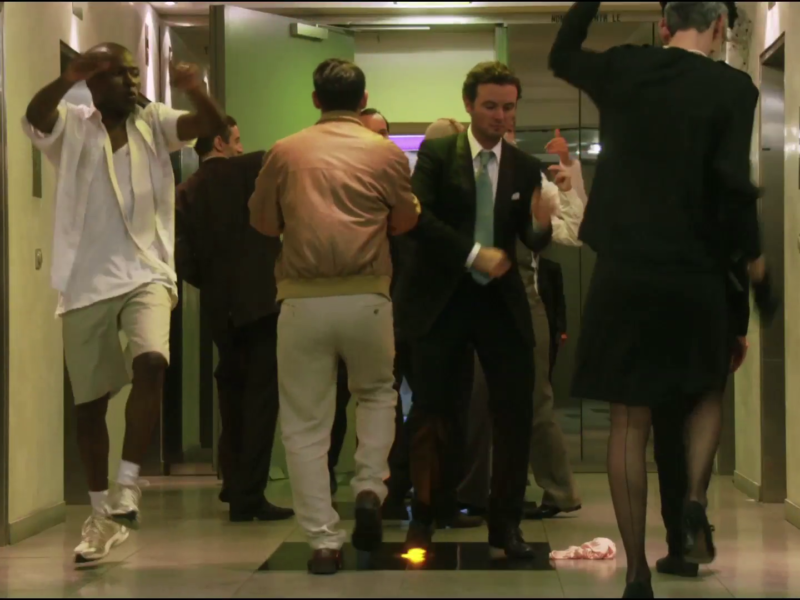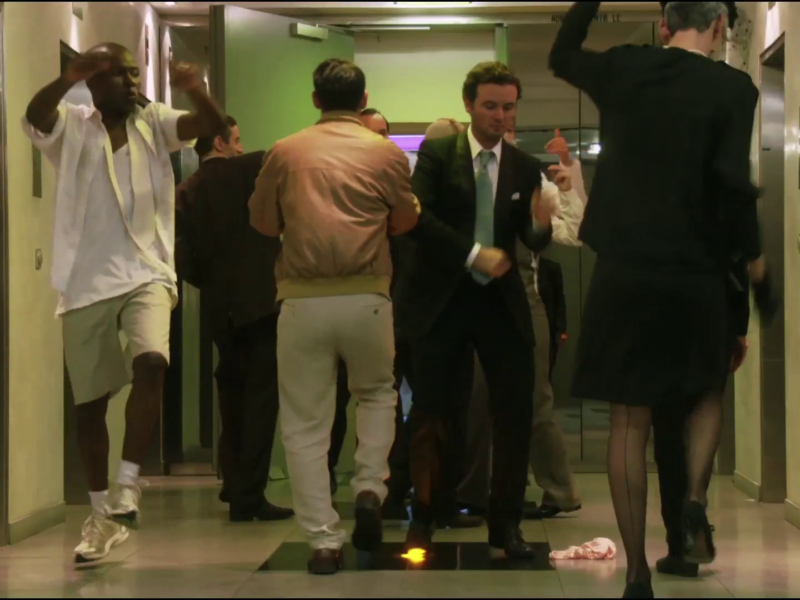A Crime must be Committed
A Crime must be Committed is the second part of a trilogy that deconstructs character stereotypes in European and US film and television history. Scenes and characters from films representing prominent genres are restaged and altered. A Crime must be Committed deals with the crime and detective genre and quotes gangster-films of the 1920s (Underworld, 1927), film noir (The Maltese Falcon, 1941), detective films (The Detective, 1968), crime thrillers (Die Hard, 1988; Shaft, 1971 and 2000), and the contemporary criminal investigation series (CSI, since 2000), among others. This retrospective shows how crime stories, constellations of protagonists, and their assigned roles are subject to change over time. They are the expression of different discourses in which the relationship between good and evil is renegotiated each time in the context of a new social-political situation. The protagonists, from detectives to today’s crime solvers, embody different notions of masculinity. And frequently playing counterpart to the lonely hero or muscle-bound police officers are figures such as the femme fatale or the asexual buddy (for example Morgan Freeman in Se7en). Hidden fears, primarily those from the male perspective of society, are seen in the casting of roles (man / women; black / white). These historical patterns and power relationships are examined. Drawing on the aesthetic typical of the respective films, Tess recombines filmic figures and dialogues in novel ways and creates a new story in a winding, non-linear narrative style. The drama culminates in a genre-defying “musical scene” bringing together all protagonists. In this scene, which Susan Sontag would label as camp, the femme fatale is transformed into a singing film theorist with “I’m your concept, your projection” and other lines, while firmly entrenched roles dissolve in a mass dance number. (Antje Krause-Wahl)
Tess Rebecca Ann


